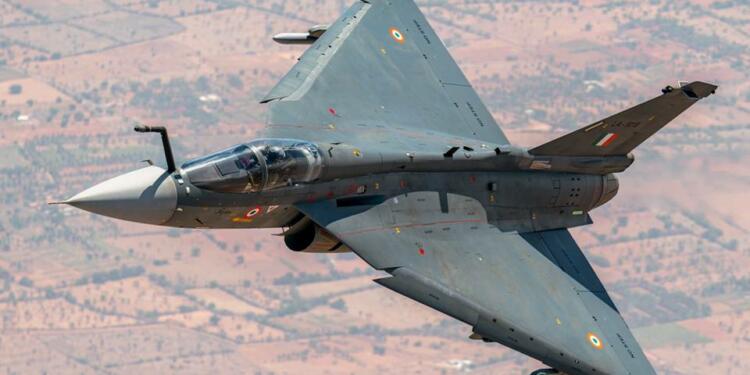One of the most ambitious defence projects of India is the indigenous production of Light Combat Aircraft Tejas. Officially started in 1983, LCA was aimed at the long-term replacement of aging MiG-21 variants. With the establishment of the Aeronautical Development Agency (ADA) in 1984, the Government of India allotted the design and development program of LCA to Hindustan Aeronautics Limited. Now, the long-term plan to develop the world’s lightest supersonic fighter jet seems to be fructifying as Tejas has started to become the top-shelf stuff in the global defence market.
LCA in demand
Last week the Government informed the Lok Sabha that Malaysia is procuring 18 Tejas Light Combat Aircraft from India. While the US, Argentina, Australia, Egypt, Indonesia, and the Philippines too have shown interest to procure the LCA Tejas.
Ajay Bhatt, Minister of State for Defence informing about the same said, “HAL in October 2021 responded to Request For Proposal (RFP) issued against tender released by Royal Malaysian Air Force, Malaysia for 18 nos of Fighter Lead In Trainer – Light Combat Aircraft (FLIT – LCA) and HAL offered LCA Tejas twin-seater variants”.
Read More: Malaysia wants India’s Tejas LCA at any cost
Tejas LCA – A Flying Dagger
With a wingspan of 8.20 meters, length of 13.20 meters, and height of 4.40 meters, Tejas LCA is the world’s lightest supersonic fighter and has the capability to carry Beyond Visual Range Weapons (BVR), air-to-surface, air-to-air, precision-guided and standoff weapons. Manufactured by HAL and designed by Aeronautical Development Agency (ADA), Fly-by-Wire (FBW) fighters can be refuelled mid-air and is a 4+ generation fighter. It comes with a glass cockpit with Satellite aided Inertial Navigation System.
Tejas is a single-engine, lightweight, highly agile, multi-role supersonic fighter. It has a quadruplex digital fly-by-wire Flight Control System (FCS) with associated advanced flight control laws. The aircraft with a delta wing is designed for ‘air combat’ and ‘offensive air support’ with ‘reconnaissance’ and ‘anti-ship’ as its secondary roles. Extensive use of advanced composites in the airframe gives a high strength-to-weight ratio, long fatigue life, and low radar signatures.
Read More: India takes a giant step as a defence manufacturer with its Tejas deal with Egypt
Far ahead of Sukhoi-30MKI
Competing with other Chinese, Russian, and South Korean fighter jets, Tejas became the top choice of the Malaysian Air Force. Comparing Tejas with Sukhoi-30MKI, the defence expert Qamar Agha said, “Tejas is fully capable of carrying a load of eight to nine tonnes. It can fly with as many weapons and missiles as Sukhoi, which weighs more. Its biggest advantage is its speed. Despite being light, its speed is unmatched. These aircraft can fly as fast as the speed of sound, i.e., Mach 1.6 to 1.8, up at an altitude of 52,000 feet”.
“The Tejas Mark-1A is also costlier than the Sukhoi-30MKI fighter aircraft because much latest equipment has been added to it. For example, it has radar developed in Israel. Apart from this, the aircraft also has indigenously developed radar. It is very light and its fighter power is also better. It is a multifunctional fighter aircraft”, he added.
Tejas: India’s Primary Fighter Jet
Considering its aging fleet of fighter jets, in February 2021, the Defence Ministry signed a 48,000-crore deal with HAL to supply 83 LCA-Mk1A to the IAF. It includes 73 LCA Tejas Mk-1A fighter aircraft and 10 LCA Mk-1 trainer aircraft at the cost of 45,696 crores along with the design and development of infrastructure sanctions worth 1,202 crores.
The MK-1A will have over 40 modifications over the MK1 variant. These include some major ones like a new Electronic Warfare system, Advanced Electronically Scanning Array (AESA) radar, Beyond Visual Range (BVR) missiles, and network warfare systems including Software Defined Radio (SDR). As per the contract, HAL has to deliver the first three MK1A aircraft to IAF in 2024. After 2024, it will deliver 16 aircraft per year for the next five years.
The Minister’s statement confirms the demand for LCA Tejas in the global defence market. Considering the modern specifications of the LCA Tejas, the jet is slowly becoming a disruptor product in the defence market. Not only for the Indian Air Force Tejas, the world’s lightest supersonic fighter, is going to be the primary combat aircraft for many countries.
Support TFI:
Support us to strengthen the ‘Right’ ideology of cultural nationalism by purchasing the best quality garments from TFI-STORE.COM





























